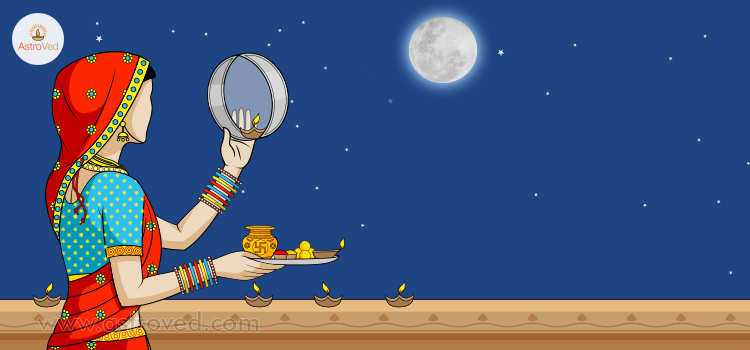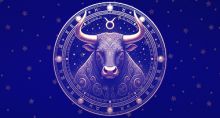What is Karwa Chauth?
Karwa Chauth is a festival celebrated by married Hindu women, for the long life and well-being of their husbands. This is observed essentially in the northern parts of the country. ‘Karwa’ is the word used for the traditional earthen lamp and ‘Chauth’ refers to the fourth day. This occasion falls on the fourth day of Krishna Paksha, the waning phase of the Moon in the month of Karthik (October – November) and comes exactly nine days before Diwali, the grand festival of lights.

What is the main ritual associated with Karwa Chauth?
Observing of Vrat or fasting, remains the most fundamental and important aspect of the Karwa Chauth festival. On that day, married women take food early in the morning, normally, even before sunrise. They, then refrain from consuming any food items and some, even water during the day time, thus observing a complete fast throughout the day. They listen to the mythological story called the Karwa Chauth Katha in the evening, pray for the good health, welfare and the longevity of their husbands, and then complete the fast after the sighting the Moon in the night.
What are the essentials of the Karwa Chauth Puja process?
Karwa Chauth vrat and puja are observed with great reverence by women. Preparations start even on the previous day, with the purchase of traditional decorative items including mehandhi and puja materials like Karwa.
The Karwa Chauth day starts very early for women, as they get up, take bath, prepare food and eat it before sunrise. For the rest of the day, many observe strict fasts. After finishing the other household chores and making arrangements for the puja, many women start applying and decorating their hands and feet with henna, that is mehandhi. They also prepare a plate for the ceremonial worship called puja thali, and get it duly decorated. Many spend the day in prayers and in reading or reciting of sacred hymns.
In the afternoon, women wear traditional dresses like saris or Chunries in red, pink or in bridal colours, decorate themselves with all the items that stand as a symbol of marriage, like, bindi, nose pin, tika, ear rings, bangles etc and gather at a common place, for a joint Karwa Chauth puja. They participate in the worship, along with their individual thalis containing the puja materials. These will normally consist of a special type of mud pot, symbolizing Lord Ganesha, a metal urn filled with water, earthen oil lamp, fruits, flowers, sindhoor, incense sticks, mathi, rice, some food grains, and small idols of the mother Goddesses like Ambika Gauri Mata and Parvathi Devi. An elderly lady among them or a woman well versed in the puja practices, will then start the puja process by narrating the legend of Karwa Chauth or the mythological story relating to the occasion, which all other women attending the puja, will listen to, with devotion.
While the women will light the lamps in their respective thalis while listening to the Katha, they will offer the puja items to the deities and share some of them with the woman, who conducts the proceedings. They will also pray for the good life, prosperity and longevity of their spouses.
Later, when the Moon appears in the sky, they will try to see it as a reflection in the water taken in their thalis or through a dupatta. They will also offer water and seek the blessings of the Moon, and end the vrat or fast, praying for a long and cordial married life.




















